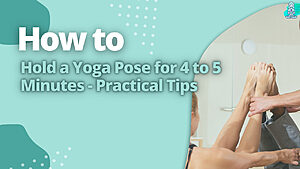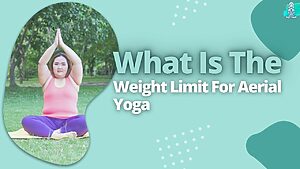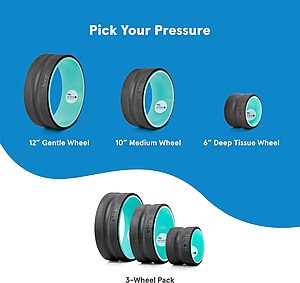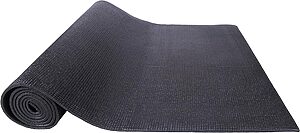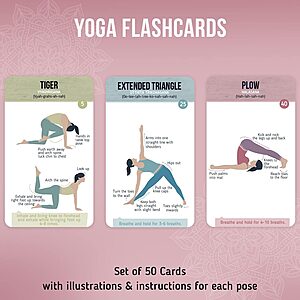I’m often asked how long someone should hold a yoga pose. Like many things in yoga, the answer is “it depends.” There are several factors to consider when deciding how long to stay in a yoga pose.
On average, one should be able to hold for a minimum of three to five breaths.
In this blog post, I’ll discuss those factors and guide you on how to determine the right amount of time for you to stay in a given pose.
Key Takeaways
- Yoga poses, or asanas, are traditionally held for a specific period.
- The amount of time you hold a pose can vary depending on your level of experience, the type of pose, and your personal goals
- Generally speaking, beginners should hold poses for shorter periods than more experienced yogis.
- There are many benefits to holding yoga poses for longer periods, including increased flexibility and improved concentration.
- Ultimately, the amount of time you spend in each pose is up to you and should be based on what feels comfortable and beneficial for you.
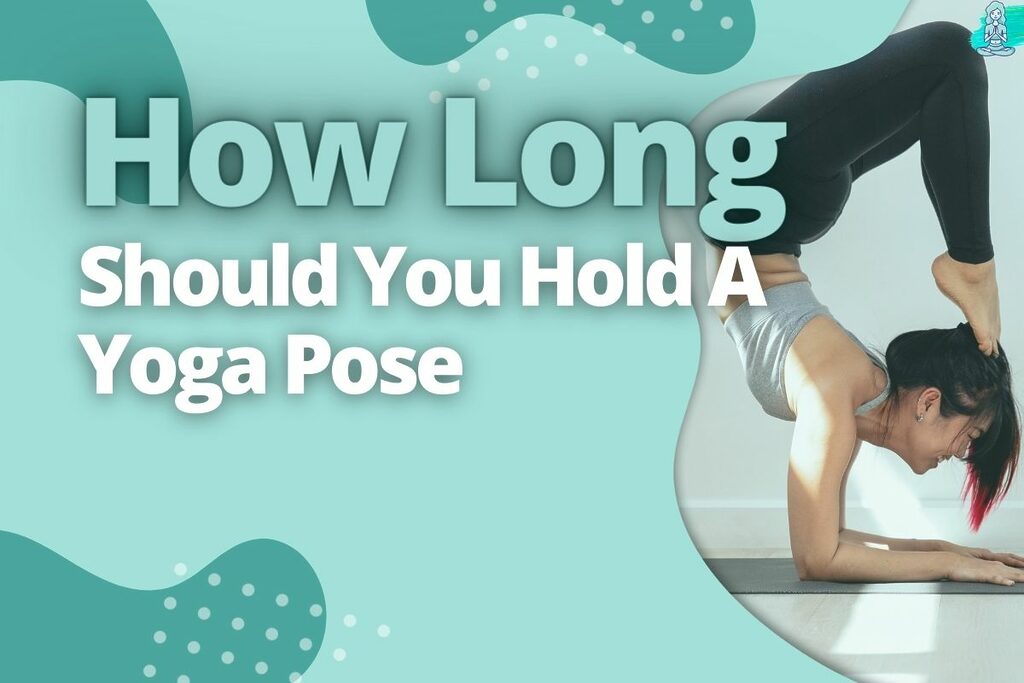
Here’s The Answer To How Long Should You Hold A Yoga Pose
A yoga pose is traditionally held for anywhere from three to five breaths. However, in the restorative style of yoga, postures are often held for much longer periods of time. So, how long should you hold a yoga pose?
There are many different types of yoga, each with its own purpose and benefits. For example, holding a posture for a longer period of time will build strength and endurance, while shorter holds are better for increasing blood flow and flexibility.
Restorative yoga is a type of yoga that uses props to support the body in passive stretching. This enables the connective tissue and muscles to relax and extend naturally without any effort on your behalf. Usually, restorative positions are held for five minutes or more.
If you’re new to yoga, it’s important to listen to your body and not push yourself too hard. If a posture feels uncomfortable, try modifying it or coming out of it early.
It’s also perfectly fine to take breaks throughout your practice. Remember that there is no “right” way to do yoga – the key is simply to find what works best for you.
Yoga Poses, Or Asanas, Should Be Held For A Minimum Of Three To Five Breaths
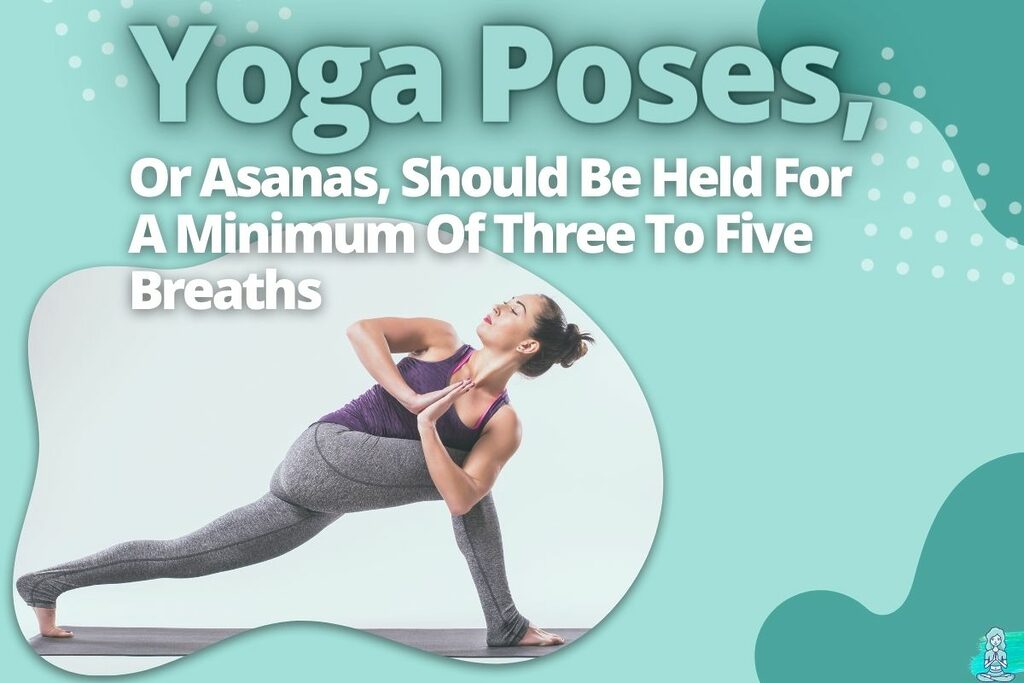
- Count the breaths of a pose before you begin.
- Beginners should count each breath for one second, whereas more advanced students might count for two seconds.
- This is a good starting point and will help prevent injury or over-stressing your body.
- If you hold the pose for too long, your muscles may burn or shake uncontrollably.
- If you hold a pose for too short of a time period, then it’s likely that you won’t reap any benefits from doing so (or be able to actually stay in it).
The Longer You Hold A Pose, The More Benefits You Will See
When it comes to yoga, the common belief is that the longer you hold a pose, the more benefits you will see. However, this is not always the case.
In fact, repetitions and fast motion can be just as beneficial as holding a pose for a long time. So, how much time should you spend on each pose?
The answer depends on your goals. It is best to hold a pose for a long period if you want to improve your circulation or stamina.
However, if you are trying to improve your flexibility or range of motion, then repetitions and/or modifications may be more beneficial.
Of course, there are a lot of benefits to yoga that cannot be measured with statistics.
Benefits Of Holding Yoga Poses Include Improved Flexibility, Increased Strength, And Reduced Stress

There are many benefits of holding yoga poses or asanas. These benefits include improved flexibility, increased strength, and reduced stress. Let’s examine each of these advantages in greater detail.
- Improved flexibility is one of the most well-known benefits of yoga. Your muscles will gradually become more flexible if you frequently practice yoga. This is because the stretching and lengthening you do in yoga help lengthen your muscles and tendons. This can help to prevent injuries in the future.
- Increased strength is another benefit of holding yoga poses. As your muscles become more flexible, they will also become stronger. This is because the muscles must work harder to support your body in the new positions you are putting them in. Over time, this will lead to increased muscle strength.
- Reduced stress is another benefit of practicing yoga regularly. The deep breathing you do during yoga helps calm your nervous system. This can lead to reduced stress levels overall.
If You Are New To Yoga, Start With Shorter Holds And Work Your Way Up
If you are new to yoga, it’s best to start with shorter holds and work your way up. This allows your body to get used to the poses and prevents you from overstretching.
Here are some tips for beginners:
- Start with basic poses and progress to more advanced ones as you get stronger.
- Hold each pose for a few breaths before moving on to the next one.
- Don’t push yourself too hard – listen to your body and only do what feels comfortable.
When I started practicing yoga, I could hardly maintain a Downward Dog position for more than a minute. But with little effort, I could lengthen my holds and eventually go on to more difficult poses.
Listen To Your Body And Never Force A Pose
- Listen to your body. Don’t force a pose if you feel pain or discomfort. If you don’t feel anything, hold it for a little longer.
- Finding a comfortable position on the floor and practicing mindful breathing are good places to start if you are new to yoga.
- Take time to listen within yourself; ask yourself what feels good and doesn’t while practicing these poses.
Work With A Certified Yoga Instructor To Ensure You Are Practicing Safely
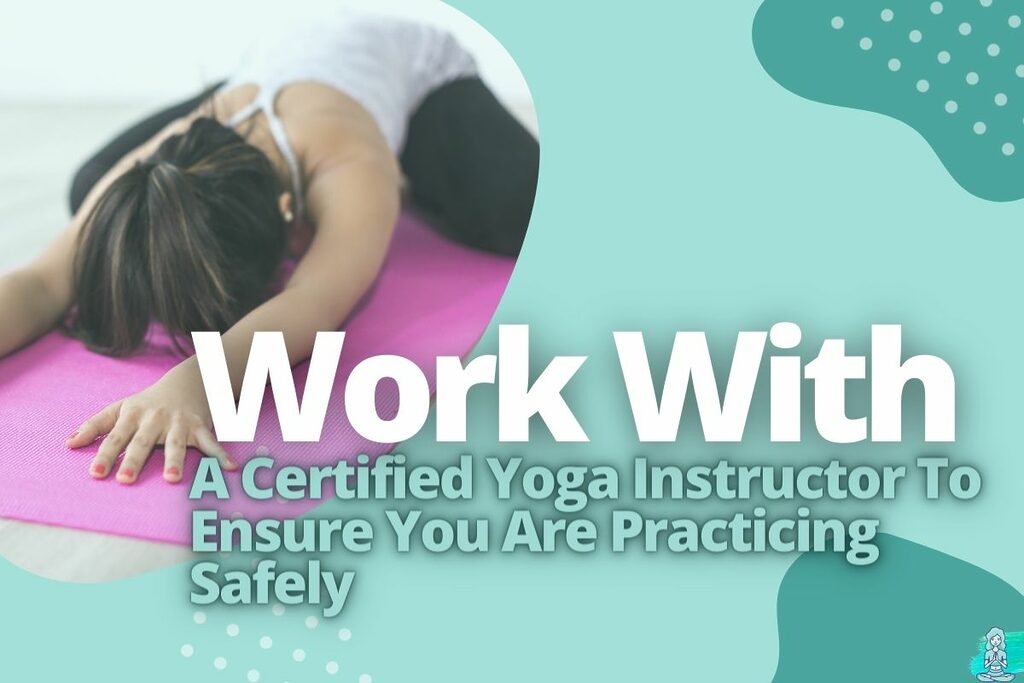
You can always work with a certified yoga instructor to ensure you are practicing safely. A certified yoga instructor will help you learn how to hold poses and find the right pose for your body type.
They will also teach you how long to hold a pose and how to breathe correctly while holding a pose.
What Is The Ideal Length Of Time To Hold A Yoga Pose?
The length of time to hold a yoga pose can be tricky, as there are many factors to consider. What is the ideal length of time to hold a yoga pose?
Well, the answer depends on what type of pose you’re doing and your level of experience in yoga. The graph below ought to offer you some inspiration:
- 1-2 breaths: Beginners new to yoga should hold this for short periods.
- 3-5 breaths: Intermediate practitioners will find this appropriate for their level.
- 5-8 breaths: Advanced students may choose this option if they’re comfortable; however, holding poses for longer periods can be challenging for many people at first.
- 7-15 breaths: This is where many advanced practitioners stay most often (although some prefer more or less). It’s important not only that you feel comfortable while doing these poses but also that they don’t cause pain or strain in any part of your body.
When To Hold A Yoga Pose?
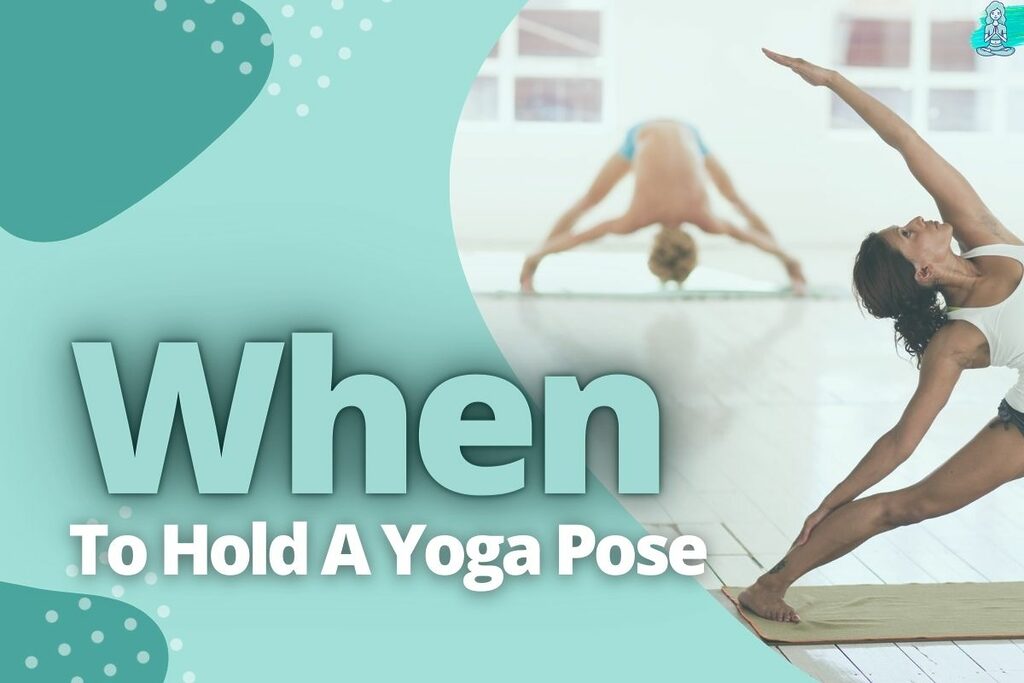
When determining how long to hold a yoga pose, there are a few rules you should go by. First, if you are pregnant or have injuries, avoid holding poses for longer than 1-2 breaths.
Also, bear in mind that your level of experience with the practice will affect the appropriate duration. Start with shorter holds if you are new to yoga and work your way up; If you’ve been practicing yoga for a while, you might want to extend the time you spend in each pose by 30 seconds.
While some students find it beneficial to increase their hold times over time as they become stronger practitioners, others may not be ready for such an advanced undertaking at first glance (or even at second).
No matter what kind of yogi you consider yourself—whether beginner or expert—you should always listen carefully to your body’s cues when practicing any physical activity because that can help prevent injury during exercise sessions.
If pain arises during an exercise movement, then stop immediately! For example: if someone feels pain in their knees when doing downward dog pose, then he should probably not continue this exercise until he feels better because continuing could cause further damage, which would take months/years before fully healing again (depending on severity).
How Can Holding A Yoga Pose For A Longer Period Of Time Improve Your Practice?
When you are new to yoga, holding a pose for longer than 10 seconds can feel overwhelming. But you may not realize that the longer you hold a pose, the more benefits you can gain from your practice.
Holding poses for longer periods allows your muscles to relax and stretch further than usual. This helps improve range of motion and flexibility in particular areas of your body—especially if those areas have been overused or underused.
Holding poses also helps increase strength throughout your body by allowing you to rest between different muscle groups (like when transitioning from one side of your body into another).
Finally, holding poses for extended periods can help reduce stress by calming down our nervous system so we can focus on ourselves instead of on whatever else is happening around us.
How Can You Make Sure You Are Holding A Yoga Pose for Appropriate Time?
You may be surprised to feel frustrated with a yoga pose you have been holding for far longer than you thought it should take. But there are ways to ensure that your time in the pose is correct.
It’s essential to practice with a certified instructor who can guide you through proper alignment and help keep track of timing, but if this is not possible, some things can help:
- Use a timer, so you aren’t distracted by other things while practicing.
- Listen carefully to how your body feels in the pose and ensure it feels good before moving on or staying longer than necessary in one position. It’s better to move on too soon than stay too long!
Are There Any Poses You Should Not Hold For An Extended Period?
You will generally experience greater advantages the longer you hold a stance. Holding yoga poses includes improved flexibility, increased strength, and reduced stress.
However, some poses should not be held for an extended period:
- If you have any injuries or medical conditions that affect your ability to do yoga safely (such as herniated disks), then consult your doctor before attempting these poses.
- If you are new to yoga and stretching, start by holding each pose for no more than five seconds at first. Work up to longer holds as you gain experience in this practice.
Conclusion
It is essential to hold each yoga pose for the recommended amount of time to reap the benefits of the stretch fully.
But if you’re new to yoga, it’s entirely normal to begin with, shorter holds and then work your way up to longer ones. The most important thing is listening to your body and doing what feels comfortable for you.
If you’re looking for a specific answer on how long to hold each yoga pose, there, unfortunately, isn’t one. Instead, it depends on your level of flexibility and strength.
That said, general guidelines can be followed based on your experience level. So, how long should you hold a yoga pose? Try to hold for at least five complete breaths.
Pay attention to your body’s signals and follow your instincts. And finally, don’t forget to check out our other yoga poses and tips articles.
Frequently Asked Questions
Are there any risks associated with holding a yoga pose for too long?
Holding a yoga pose for longer than recommended is generally safe, but some risks are associated with holding any pose for an extended period.
These risks include:
• You may overstretch your muscles and joints, which can lead to injuries.
• You may put too much strain on your cardiovascular system, which can lead to dizziness or fainting.
• If you have any medical conditions that affect your ability to do yoga safely.
How can I improve my flexibility in holding yoga poses for longer periods?
When performing yoga positions, there are a few things you may do to increase your flexibility:
• Try different types of yoga. Some styles, like hatha yoga, focus on holding poses for longer periods than others.
• Do some basic stretching and strengthening exercises every day. This will help prepare your body for holding yoga poses for longer periods.
• Increase the length of time you spend in each stance gradually. Work up to longer holds beginning with shorter ones.
What are some tips for beginners who want to start practicing yoga and incorporating it into their lives?
Here are a few beginner yoga tips:
• Start with basic poses and gradually work your way up to more advanced poses.
• Don’t push yourself too hard. If you feel pain, stop and rest.
• Pay attention to your body’s signals and follow your instincts.
• Find a yoga style that you enjoy and stick with it.
Should I do yoga every day or once a week?
The frequency of yoga practice depends on your goals and commitments. For example, if you want to experience the health benefits of yoga, then practicing at least 3-4 times per week is recommended. Conversely, regular practice might be more advantageous if you wish to employ yoga to relieve tension or anxiety. The frequency of your yoga practice ultimately depends on your goals and schedule.
- How to Hold a Yoga Pose for 4 to 5 Minutes – Practical Tips
- A Guide to Finding the Perfect Yoga Mat for Carpet Floors
- Can You Add Yoga To Fitbit Luxe (Unlock the Power)
- Can You Add Yoga To Garmin Vivoactive (Yoga On The Go)
- Is Aerial Yoga Dangerous (The Scary Truth)
- What Is The Weight Limit For Aerial Yoga (Exploring The Possibilities)

